
SaGa Emerald Beyond Review
It's no surprise that SaGa Emerald Beyond has been one of my most anticipated games of the year. SaGa Scarlet Grace: Ambitions was my GOTY in 2019, and I wasn't alone. SaGa as a franchise has prided itself on being radically different than its peers; and Scarlet Grace was no exception. Its combination of an unorthodox world map filled with fascinating cause-and-effect puzzles, one of the best turn-based battle systems in RPGs and an equally incredible soundtrack got its hooks in me - and even now I consider it one of my favorite RPGs of all time. No matter what, the follow-up was going to have a lot to live up to. In many ways, Emerald Beyond succeeds; yet with its increased scope, I can't help but feel that some of the balance of Scarlet Grace has been lost in the process.
Let's get it out of the way now; regardless of my own misgivings with specific elements of the game, if you're a SaGa fan - and especially if you already enjoyed Scarlet Grace - this review is meaningless. Emerald Beyond is well worth playing, and in-fact I intend to keep doing so for many more playthroughs in the near and far future. If you're the type of player to tackle multiple playthroughs of an RPG, Emerald Beyond will be a veritable playground.
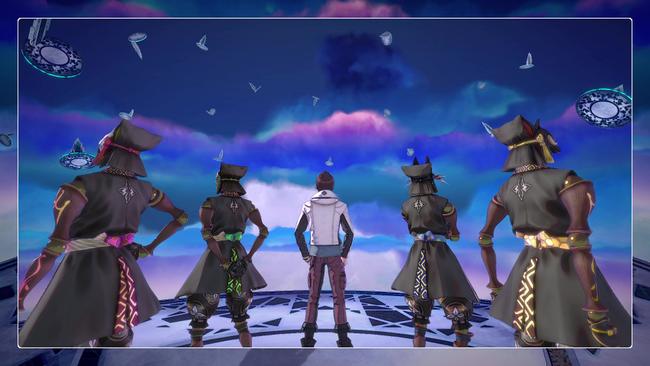
SaGa Emerald Beyond is a game split across multiple neighboring worlds, with each of the game's 5 starting characters having their own reasons to traverse the multiverse. Whether it's Ameya's stolen magic, and her journey to reclaim it all in time to become a proper Witch, Bonnie and Formina's search to locate the perpetrator who endangered their President's life, Diva #5's journey to find her own heart and more - each has a slightly different journey waiting ahead of them. Some will be far more straightforward, while others will give you more-or-less complete freedom to explore the worlds at your leisure.
Unlike Scarlet Grace, where players could wander to and from across different regions on a whim, one major change that Emerald Beyond brings to the table is the choice to force players to stay in a given world that they've chosen to explore until they've exhausted its story; this means that if you've found yourself locked into a particularly long world, it can end up feeling a bit restricting. It's hard to say for sure with all the different permutations of playthroughs you can tackle, but it seems like the first time you enter a world - regardless of the playthrough - that things might just be even more linear than usual. It's a little frustrating as a reviewer, since it makes the first few playthroughs of Emerald Beyond almost feel like you're on training wheels, but it's hard for me to say for sure if it's not just different characters having a more restrictive experience with some worlds over others. I wouldn't be shocked if it was the latter; though even with 3 playthroughs of varying playtimes under my belt, it's still hard to say for sure. Despite the complaint, Emerald Beyond is just as cryptic as SaGa has always been.
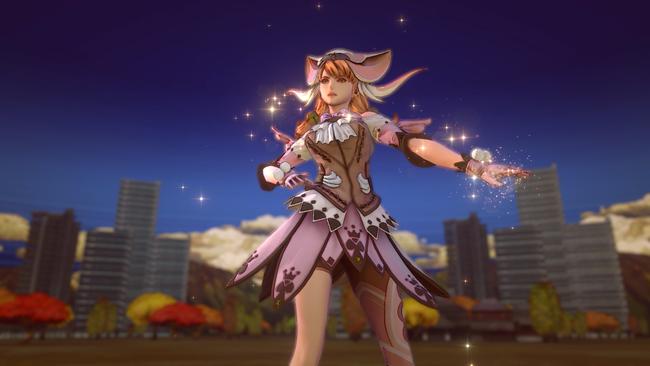
For example; my first playthrough as Ameya clocked in at a mere 6 hours. Unlike my other two playthroughs, I didn't encounter the final boss - and it ended on a cliffhanger. I'm curious to start a new playthrough as Ameya to see what might change - especially if I choose to prioritize different objectives this go around. Something tells me I missed something; but it's elements like this that I find the most appealing about the game as a whole. Even after 3 playthroughs, having visited most worlds multiple times, I'm left wondering how exactly I could do things differently. I've already seen bits and pieces of it in some worlds; and if Ameya's cliffhanger is anything to go off of, I'm especially curious if there might be greater challenges waiting for me to discover.
It's incredibly difficult to describe Emerald Beyond's battle system, especially without invoking knowledge of how Scarlet Grace's battle system worked in turn. It's just as much a natural progression of the system in that game, as it is a radical departure; yet I'm left confident that the changes that the team has made have left us with something alltogether deeper and more engaging.

Scarlet Grace's combat revolved around understanding and controlling the timeline. Positioning your party in such a way that defeating an enemy will bring different sections of your party together, starting a United Attack, and allowing for reduced BP cost on the succeeding turn; then you had wrinkles such as Conditionals to worry about, which can throw a wrench into your plans if not dealt with carefully. Most of those ideas remain the same with Emerald Beyond, with a few core distinctions that expand upon the combat system as a whole.
First off; there's two timelines now. You have your party members and enemies present on a timeline, but Emerald Beyond adds a second timeline underneath the move order. This means two things; there can be gaps between your party members and the enemies, and different attacks now have a range with which they will span the lower timeline. United Attacks are no longer activated by defeating an enemy between multiple party members, but rather by linking party member attacks together through the lower timeline. As you combine your party member's attacks, and make use of bonus modifiers for setting up trickier maneuvers on the timeline, these new United Attacks will raise the combo rate of your party - increasing the damage modifier of your attacks, and increasing the chance that some of your party members will launch a follow-up attack after the United Attack is over. Much like in Scarlet Grace, completing a United Attack will also lower the BP cost of anyone who participated in the next round of attacks.
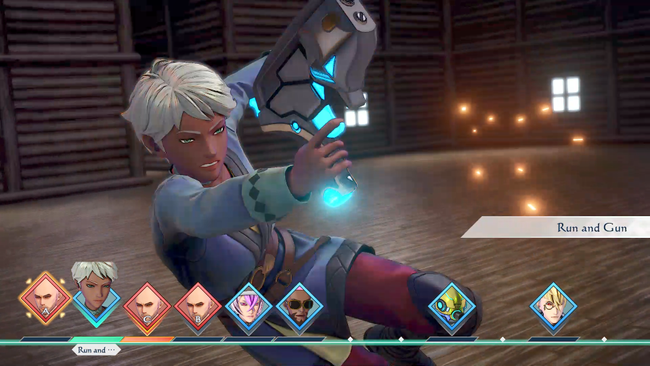
Adding yet another wrinkle to matters is how Pursuits (attacks directly after a specific enemy's actions) and Chains (the same as Pursuits, but for a specific party member's attack) alter your playstyle. These can be crucial to both breaking up enemy United Attacks, as well as extending your own. That being said, these actions can only contribute to a United Attack if after the timeline has shifted following the action there is a section of the lower timeline highlighted. Pursuits and Counters don't set anything on the lower timeline themselves, and so they'll rely on the player setting an opening up for them in advance.
The key revolves around how different actions not only cost different amounts of BP, but also set a different number of and orientation of nodes for the lower timeline. If you want someone to start a United Attack with a Pursuit, for example, you'll need to make sure that the unit directly following their targeted enemy on the timeline is using a move that will leave a node available below them. The same goes for the opposite with Chains; there has to be a spot further to the right on the timeline, waiting for them to overlay on top of it. Naturally, while also accounting for the fact that different moves will also impact a unit's direct positioning on the timeline.
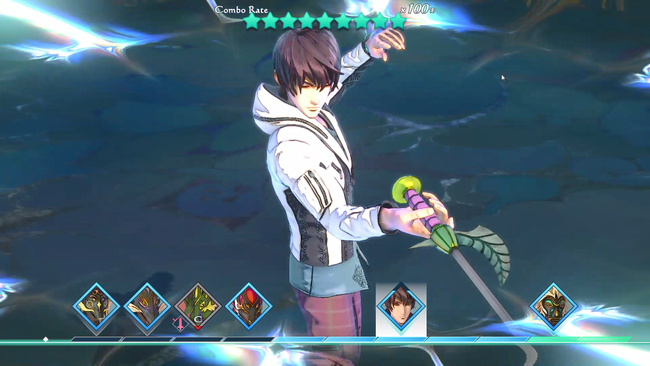
Finally, there's Showstoppers. If any unit on the timeline can position themselves at least 2 nodes away from any other unit - ally or enemy - on the timeline, they can act all on their own - expending as much BP as possible, dealing massive burst damage in an instant as they rotate through their available actions. These can be the difference between a win and a loss when the chips are down - but the same can be said for your enemies if you lack the tools to shut them down before they can activate one themselves. It's a neat inversion of much of the game's mechanics, but at the same time feels at home with the changes to the timeline, and offers another wrinkle to consider.
This sounds incredibly convoluted, and it's absolutely an extra layer of planning required on the part of the player - but take my word for it that it does feel really intuitive once you've had a chance to acclimate yourself.
All of this is compounded by how players will gain access to their toolkit throughout the game. As per series tradition, humans will "Glimmer" new abilities spontaneously based off of their skill level with a specific weapon type, and potentially based off skills inherent to the weapon they have equipped. Monsters learn skills by absorbing defeated fiends, and taking their abilities for their own, and Mechs utilize abilities that directly come from the equipment that they wear - without the ability to Glimmer actions on their own.
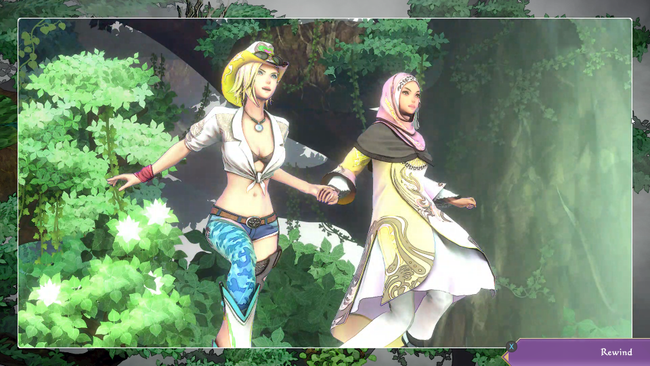
As a direct result of the large variety of playstyles, and characters that can accomodate them, even if the basic exploration might feel a bit too linear at times it's easy enough to make separete playthroughs feel unique. Different characters start out with various party configurations, and I couldn't help but notice how they seem almost tailored to different levels of experience with the game's systems. Bonnie and Formina start off with a party of 3 Monsters accompanying them, with a Tech joining their roster very shortly afterward. Their story is by far the most open-ended, with players given free reign to tackle worlds in essentially whatever order they deem fit; and having such a varied party composition from the start certainly seems to imply a level of expectation about the player's own experience level.
While Emerald Beyond certainly gives you all the tools to learn more about SaGa as a whole, I do wonder exactly how palpable the game might be for complete newcomers to the series. The battle system alone - and how your party composition plays into it - could take up an entire dissertation on its own, and that's not even accounting for aspects of the gameplay that I've skimmed over, such as how your actions during each playthrough can lead to key items necessary for specific equipment upgrades. Or, how other minor races like Vampires, Kugutsu and the like can tie into any individual playthrough.
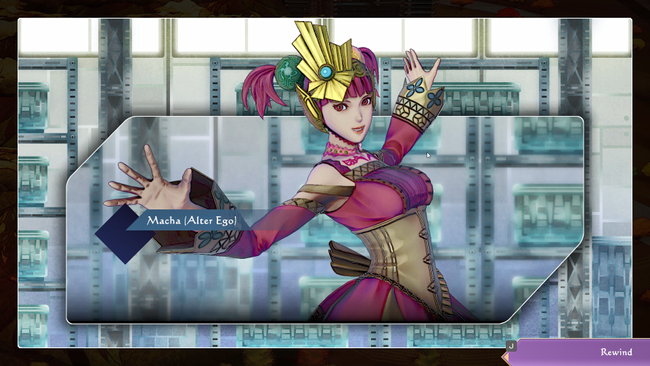
I could talk about how the game's artstyle is greatly improved from Scarlet Grace, especially during battles with character models that don't betray the game's roots on a much more restrained platform. I could talk about Kenji Ito's incredible music for the game, as always. I could gush for days about the unique vocal tracks tied to specific boss fights, and in some cases specific characters. At the end of the day, however, those aren't the core of what makes Emerald Beyond a triumph. Where SaGa: Scarlet Grace was a series of puzzle boxes, Emerald Beyond embraces the idea of totally disparate worlds, even if the gravity of the player's actions don't immediately make themselves clear - and, if players likely won't get the bigger picture until multiple playthroughs deep.
I feel that's a tough ask for the average RPG fan; and it makes recommending Emerald Beyond to those unversed in Kawazu's picture of the RPG a difficult proposition. For anyone that's already a fan of SaGa, however, it was never really a question if Emerald Beyond would be for you. This is a SaGa for SaGa fans, and in truth I couldn't be happier any other way.